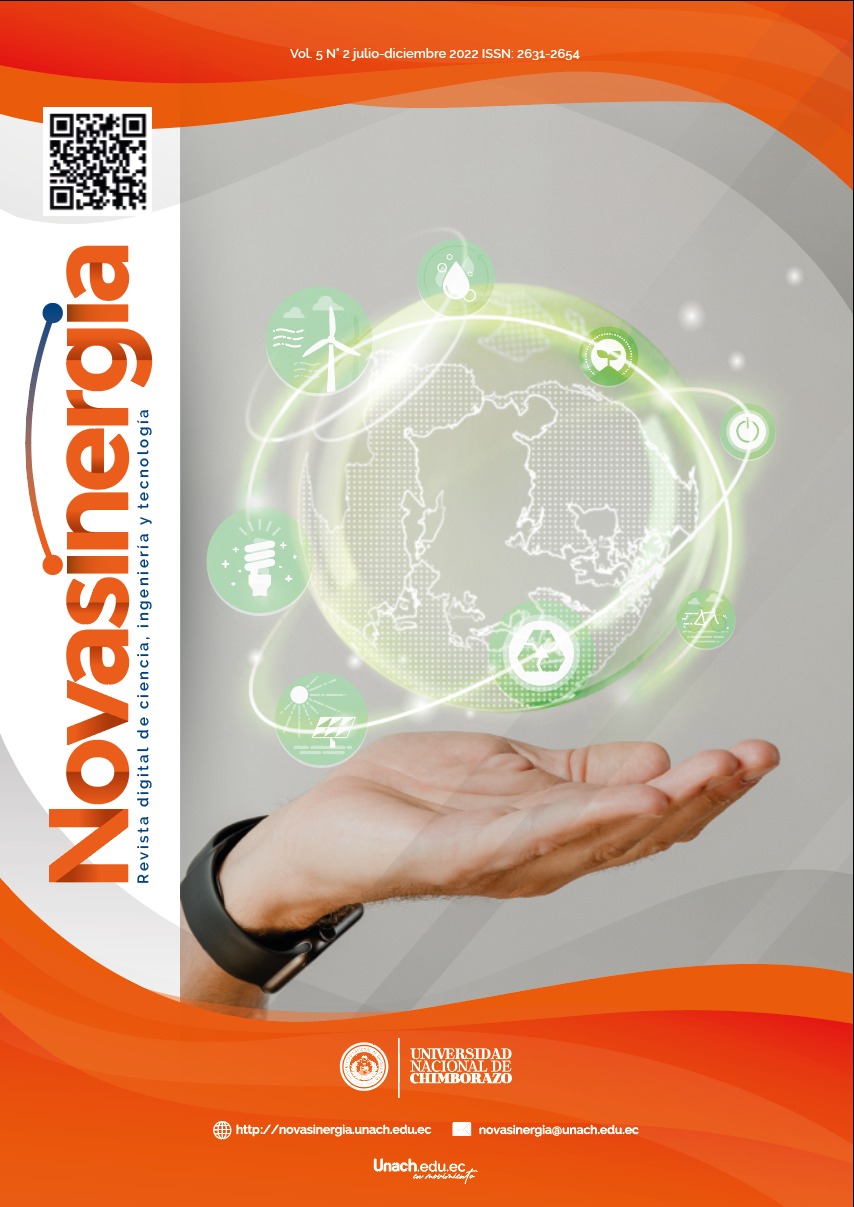Microclimate influence in buildings thermal comfort and energy performance: A numerical assessment of a historical heritage settlement
DOI:
https://doi.org/10.37135/ns.01.10.08Keywords:
Dynamic energy simulation, energy consumption, microclimate, natural ventilation, thermal comfortAbstract
Due to climate change consequences, microclimate effects, and heat islands in cities, this research seeks to evaluate the natural potential ventilation and energy use at an urban scale in the Casco Antiguo of Panama City. The Natural Ventilation Climate Potential (NVCP), the Natural Ventilation Satisfied Hours (NVSH), and the Electricity Consumption Indicator (ECI) were used as indicators to evaluate natural ventilation. For this purpose, a methodology based on dynamic energy simulations was conducted by coupling ENVI-met and DesignBuilder software. Furthermore, an optimization process based on parametric studies, sensitivity, and uncertainty analysis allow for comparing envelopes of construction materials, glazing, and operating hours of windows with thermal discomfort hours. Results showed that the area under study does not have a beneficial micro-climate for natural ventilation (NVCP = 19.41%), affecting indoor thermal comfort (NVSH = 3.11%). Finally, an optimization process showed that envelope materials do not generate significant changes concerning hours of thermal discomfort in passive mode at the urban scale. However, energy use in active mode was reflected by implementing walls and roofs of superinsulated material.
Downloads
References
ASHRAE. (2013). Standard 55: Thermal environmental conditions for human occupancy.
Retrieved from: https://www.ashrae.org/technical-resources/bookstore/standard-55-thermal-environmental-conditions-for-human-occupancy
Atlas Nacional de Panamá (1988). Mapas de Climas de la República de Panamá, Retrieved from: https://www.inec.gob.pa/Archivos/P28813.pdf
Belegundu, A. D., & Chandrupatla, T. R. (2019). Optimization Concepts and Applications in Engineering, (3rd ed.). Cambridge: Cambridge University Press. https://doi.org/10.1017/9781108347976
Bouchahm, Y., Bourbia, F., & Bouketta, S. (2012). Numerical Simulation of Effect of Urban Geometry Layouts of Wind and Natural Ventilation Under Mediterranean Climate. In Conference 6th ASCAAD, 2012. Retrieved from: https://www.researchgate.net/publication/322743803_Numerical_Simulation_of_Effect_of_Urban_Geometry_Layouts_of_Wind_and_Natural_Ventilation_Under_Mediterranean_Climate
Causone, F. (2015). Climatic potential for natural ventilation. Architectural Science Review, 59(3), 212-228. http://dx.doi.org/10.1080/00038628.2015.1043722
Cordero, X., (2014). Microclima y Confort Térmico Urbano: Análisis sobre la influencia del amorfología del cañon .Urbano, caso de estudio en los barrios del Raval y Gracia, Barcelona (Trabajo final de Máster en Arquitectura, Energía y Medio Ambiente). Escuela Técnica Superior de Arquitectura de Barcelona. Barcelona: Españan. Retrieved from: https://upcommons.upc.edu/bitstream/handle/2099.1/23637/XimenaCordero_TFM.pdf
DesignBuilder. (n. d.). Módulo Optimización. Retrieved from: https://designbuilder.co.uk/optimisation
Guía de construcción sostenible para el ahorro de energía en edificaciones (2016). Retrieved from: https://www.gacetaoficial.gob.pa/pdfTemp/28165/GacetaNo_28165_20161124.pdf
He, J., Ding, L., & Prasad, D. (2020). Wind-sensitive urban planning and design: Precinct ventilation performance and its potential for local warming mitigation in an open midrise gridiron precinct. Journal of Building Engineering, 29. 101145. https://doi.org/10.1016/j.jobe.2019.101145
Jiang, Y., Wu, C., & Teng, M. (2020). Impact of Residential Building Layouts on Microclimate in a High Temperature and High Humidity Region. Sustainability, 12(3). https://doi.org/10.3390/su12031046
Kastillo, J. P., & Beltrán, R. (2015). Optimización energética para el aprovechamiento de ventilación natural en edificaciones en climas cálidos de Ecuador (Proyecto previo a la obtención del título de Ingeniero Mecánico). Escuela Politécnica Nacional, Quito:Ecuador. http://dx.doi.org/10.13140/2.1.1704.4803
Kusumastuty, K. D., Poerbo, H. W., & Koerniawan, M. D. (2018). Climate-sensitive urban design through Envi-Met simulation: A case study in Kemayoran, Jakarta. IOP Conference Series: Earth and Environmental Science. 129. 012036. http://dx.doi.org/10.1088
/1755-1315/129/1/012036Lawrence, M. (2005). The Relationship between Relative Humidity and the Dewpoint Temperature in Moist Air. A Simple Conversion and Applications. Atmospheric Bulletin of the American Meteorological Society, 86(2), 225-234. https://doi.org/10.1175/BAMS-86-2-225
Lin, S. H. (2014). Designing in performance: Energy simulation feedback for early-stage design decision making (PhD thesis). University of Southern California, CA-USA. Retrieved from: https://www.researchgate.net/publication/260714182_Designing-in_performance_energy_simulation_feedback_for_early_stage_design_decision_making
Meiss, A., Padilla, M., & Feijo, J. (2017). Methodology Applied to the Evaluation of Natural Ventilation in Residential Building: A Case Study. Energies, 10(4). https://doi.org/10.3390/en10040456
Mendes, Á., & Romero, M. (2021). Microclimas urbanos en la ciudad de Panamá: Estudio de tres recortes históricos de la ocupación urbana. Paranoá 30. https://doi.org/10.18830/issn.1679-0944.n30.2021.03
Mirakhorli, A. (2017). Natural Ventilation in Residential Building: An EnergyPlus Simulation Study. In Project: Residential Buildings Efficiency, the University of Texas at San Antonio. TX:USA. Retrieved from: https://www.researchgate.net/publication/319162483_Natural_Ventilation_in_Residential_Buiding_An_EnergyPlus_simulation_study
Morakinyo, T., & Lam, Y. (2016). Simulation study on the impact of tree configuration, planting pattern, and wind condition on street canyons' micro-climate and thermal comfort. Building and Environment, 103. 262-275. https://doi.org/10.1016/j.buildenv.2016.04.025
Padilla, C. (2016). Plan integral para la mejora de la movilidad y seguridad vial para el centro histórico de la ciudad de Panamá (Reporte técnico E.1). Alcaldía de Panamá y Banco Interamericano de Desarrollo. Retrieved from: https://dpu.mupa.gob.pa/wp-content/uploads/2017/06/20175-E.3-002-R01_INFORME_FINAL_ESTRATEGIAS_DE_MOVILIDAD_CH_PANAMA.pdf
Pérez, Y. (2018). Estrategias de ventilación natural en climas tropicales a partir del comportamiento del viento sobre edificios ubicados en espacios urbanos mediante la simulación de programas de diseños interactivos (Trabajo final de máster, Universidad Politécnica de Catalunya), Catalunya: España. Retrieved from: https://upcommons.upc.edu/handle/2117/122457
Priyadarsini, R., C. K., Hien, & Wai, C., (2008). Microclimatic modeling of the urban thermal environment of Singapore to mitigate urban heat island. Solar Energy, 82(8), 727-745. https://doi.org/10.1016/j.solener.2008.02.008
Secretaría Nacional de Energía, Plan Energético Nacional 2015-2050, (2016). Retrieved from: https://www.senacyt.gob.pa/wp-content/uploads/2018/12/3.-Plan-Energetico-Nacional-2015-2050-1.pdf
Tan, Z., & Deng, X. (2017). Assessment of Natural Ventilation Potential for Residential Buildings across Different Climate Zones in Australia. Atmosphere, 8(9). https://doi.org/10.3390/atmos8090177
Tong, Z., Chen, Y., & Malkawi, A. (2016). Defining the Influence Region in neighborhood-scale CFD simulations for natural ventilation design. Applied Energy, 182, 625-633. http://dx.doi.org/10.1016/j.apenergy.2016.08.098
Yi, C. Y., & Peng, C. (2014). Microclimate Change Outdoor and Indoor Coupled Simulation for Passive Building Adaptation Design. Procedia Computer Science, 32, 691-698. http://dx.doi.org/10.1016/j.procs.2014.05.478
Yoon, N., Norford, L., Malkawi, A., Samuelson, H., & Piette, M. A. (2020). Dynamic metrics of natural ventilation cooling effectiveness for interactive modeling. Building and Environment, 180. https://doi.org/10.1016/j.buildenv.2020.106994
Zhou, J., Zhang, G., Lin, Y., & Li, Y. (2007). Coupling of thermal mass and natural ventilation in buildings. Energy and Buildings, 40(6). 979-986. https://doi.org/10.1016/j.enbuild.2007.08.001







